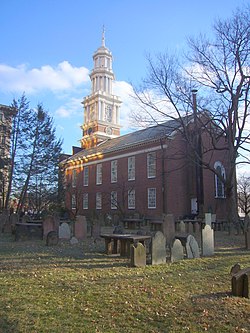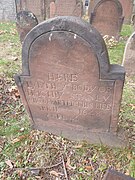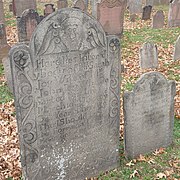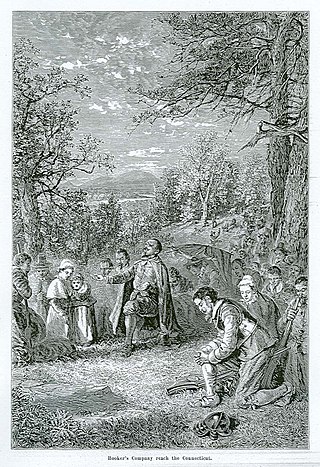
Thomas Hooker was a prominent English colonial leader and Congregational minister, who founded the Connecticut Colony after dissenting with Puritan leaders in Massachusetts. He was known as an outstanding speaker and an advocate of universal Christian suffrage.

John Haynes, also sometimes spelled Haines, was a colonial magistrate and one of the founders of the Connecticut Colony. He served one term as governor of the Massachusetts Bay Colony and was the first governor of Connecticut, ultimately serving eight separate terms. Although Colonial Connecticut prohibited Governors from serving consecutive terms at the time, "John Haynes was so popular with the colonists that he served alternately as governor and often as deputy governor from 1639 to his death in 1653."

The Wadsworth Atheneum is an art museum in Hartford, Connecticut. The Wadsworth is noted for its collections of European Baroque art, ancient Egyptian and Classical bronzes, French and American Impressionist paintings, Hudson River School landscapes, modernist masterpieces and contemporary works, as well as collections of early American furniture and decorative arts.

Samuel Stone was a Puritan minister and co-founder of Hartford, Connecticut.
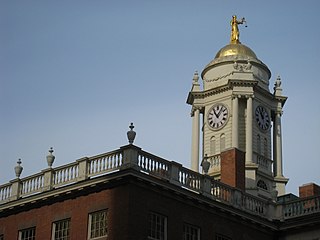
The History of Hartford, Connecticut has occupied a central place in Connecticut's history from the state's origins to the present, as well as the greater history of the United States of America.

Ye Antientist Burial Ground is a cemetery in New London, Connecticut, bounded by Hempstead Street on the west and Huntington Street on the east, running from Granite Street to approximately Bristol Street. It has been known by several names over the years, many spelling variations on Ancient Burial Ground. It is one of the earliest graveyards in New England and the oldest colonial cemetery in New London County. The hillside lot of 1.5 acres and adjoins the site of New London's first meeting house. The settlement at the time was called "Pequot Plantation" until the name changed in 1658. From the burial grounds, the visitor has a broad view to the east of the Thames River and, on the far shore, the heights of Groton, Connecticut.
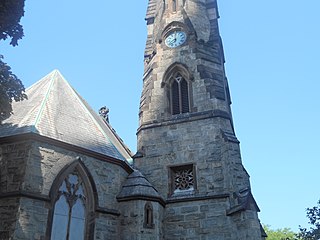
Trinity-St. Paul's Episcopal Church in New Rochelle in Westchester County, New York was added to the National Register of Historic Places in 2006. It is located at the northwest corner of Huguenot Street and Division Street. This church represents the body of the majority group of New Rochelle's founding Huguenot French Calvinistic congregation that conformed to the liturgy of the established Church of England in June 1709. King George III gave Trinity its first charter in 1762. After the American Revolutionary War, Trinity became a parish of the Protestant Episcopal Church of America.

The First Church in Windsor, Connecticut is the oldest Congregational church in Connecticut. Its origin can be traced back to 1630, when 140 men and women sailed out of Plymouth, England on the Mary & John. This was the first of 17 ships in the so-called Winthrop Fleet, bound for the Massachusetts Bay Colony. When they heard from the Indians about the fertile land along the Connecticut River in what is now called the Connecticut River Valley, a small contingent of settlers travelled southwest and established the first settlement in Connecticut at Windsor in 1633. Word soon spread that Windsor was a good place in which to settle: in 1635, the congregation of the First Church departed from their homes in Dorchester, Massachusetts to relocate to Connecticut.
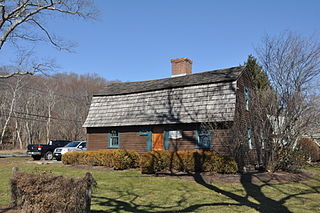
The Parker House is a historic house at 680 Middlesex Turnpike in Old Saybrook, Connecticut. It is a roughly square 1+1⁄2-story wood-frame structure with a gambrel roof, built in 1679 by Deacon William Parker. It is believed to be one of the oldest houses in the state, and was listed on the National Register of Historic Places in 1978.
William Wadsworth was an early pioneer of New England, a founder of Hartford, Connecticut and the patriarch of numerous and prominent Wadsworth descendants of North America, including the poet Ezra Pound.

The Second Church of Christ, known more recently as the South Congregational Church, is a historic church in Hartford, Connecticut. Built in 1825–27, it is one of the oldest surviving public buildings in the city. It is the third home of its congregation, which was founded in 1670, and is one of the oldest purely Congregationalist groups in the nation. The building was listed on the National Register of Historic Places in 1978.
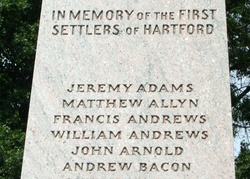
Jeremy Adams, also known as Jeremiah Adams, was one of the first settlers of Hartford, Connecticut. He was also the founder and first proprietor of Colchester, Connecticut, which was established on land owned by Adams, known as "Jeremiah's Farme".
The following is a timeline of the history of the city of Hartford, Connecticut, USA.
Richard Olmsted was a founding settler of both Hartford and Norwalk, Connecticut. He served in the General Court of the Connecticut Colony in the sessions of May 1653, October 1654, May 1658, October 1660, May 1662, May and October 1663, May and October 1664, October 1665, May and October 1666, May 1667, May and October 1668, May 1669, May 1671, and May 1679.
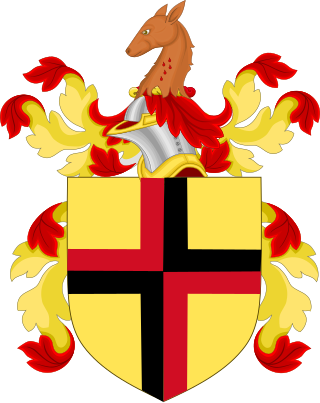
Richard Webb I was a founding settler of Hartford and Norwalk, Connecticut. He served as a deputy of the General Court of the Connecticut Colony from Norwalk in the session of May 1656.
Nathaniel Ely was a founding settler of Hartford and Norwalk, Connecticut. He served as a deputy of the General Court of the Connecticut Colony from Norwalk in the October 1656 session.
Nathaniel Richards (1604–1681) was a founding settler of Hartford and Norwalk, Connecticut. He served as a deputy of the General Court of the Connecticut Colony from Norwalk in October 1658.
Thomas Hale was a founding settler of Hartford, and Norwalk, Connecticut. Thomas was the son of John Hale and Martha MNU, of Watton-on-Stone, Hertfordshire, England.
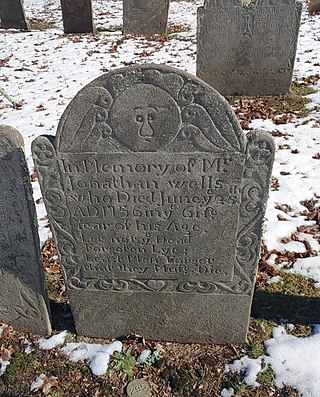
Gershom Bartlett was a stone carver who carved tombstones in colonial Connecticut and Vermont. His carved gravestones are widespread in colonial burying grounds in eastern Connecticut as well as towns in Vermont and New Hampshire near the Connecticut River.

The Wethersfield Village Cemetery is a historic burying ground in Wethersfield Connecticut that was started in 1638, and is the second oldest burial ground in Connecticut.
